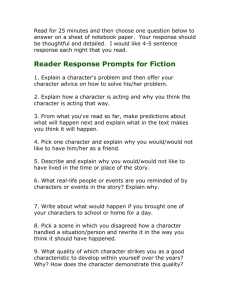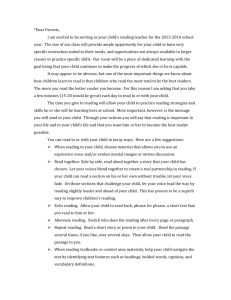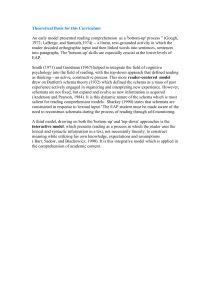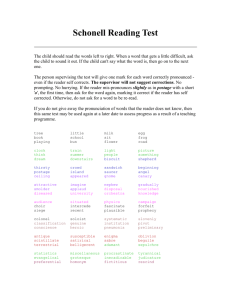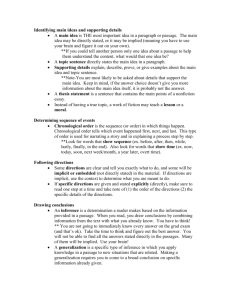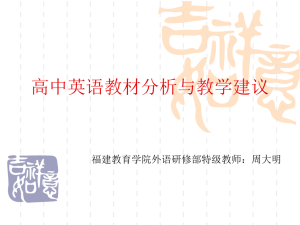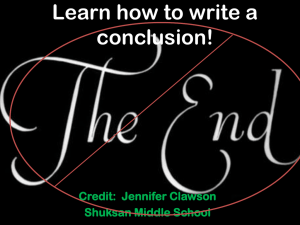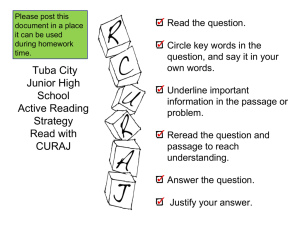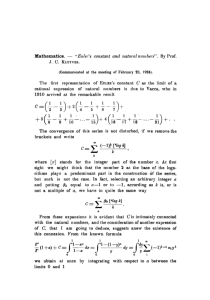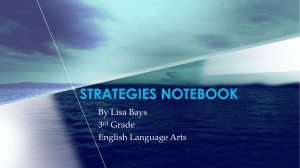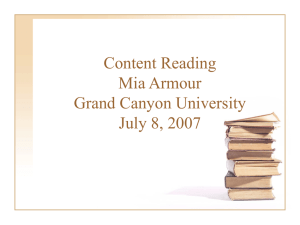Helping Students Read Science 2
advertisement
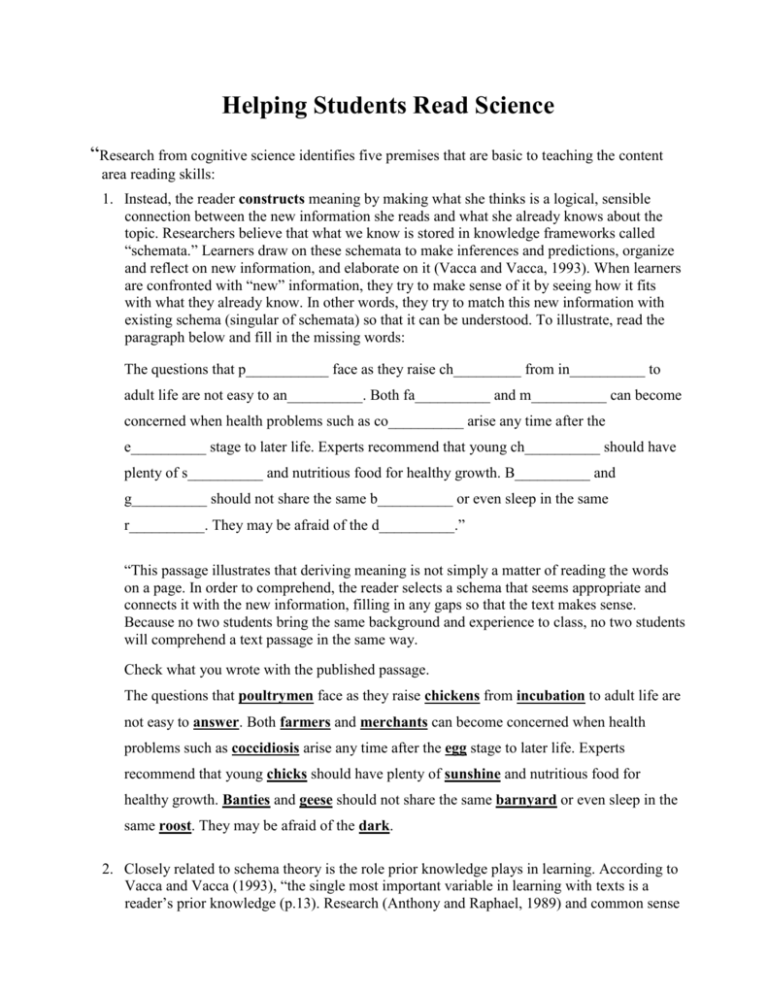
Helping Students Read Science “Research from cognitive science identifies five premises that are basic to teaching the content area reading skills: 1. Instead, the reader constructs meaning by making what she thinks is a logical, sensible connection between the new information she reads and what she already knows about the topic. Researchers believe that what we know is stored in knowledge frameworks called “schemata.” Learners draw on these schemata to make inferences and predictions, organize and reflect on new information, and elaborate on it (Vacca and Vacca, 1993). When learners are confronted with “new” information, they try to make sense of it by seeing how it fits with what they already know. In other words, they try to match this new information with existing schema (singular of schemata) so that it can be understood. To illustrate, read the paragraph below and fill in the missing words: The questions that p___________ face as they raise ch_________ from in__________ to adult life are not easy to an__________. Both fa__________ and m__________ can become concerned when health problems such as co__________ arise any time after the e__________ stage to later life. Experts recommend that young ch__________ should have plenty of s__________ and nutritious food for healthy growth. B__________ and g__________ should not share the same b__________ or even sleep in the same r__________. They may be afraid of the d__________.” “This passage illustrates that deriving meaning is not simply a matter of reading the words on a page. In order to comprehend, the reader selects a schema that seems appropriate and connects it with the new information, filling in any gaps so that the text makes sense. Because no two students bring the same background and experience to class, no two students will comprehend a text passage in the same way. Check what you wrote with the published passage. The questions that poultrymen face as they raise chickens from incubation to adult life are not easy to answer. Both farmers and merchants can become concerned when health problems such as coccidiosis arise any time after the egg stage to later life. Experts recommend that young chicks should have plenty of sunshine and nutritious food for healthy growth. Banties and geese should not share the same barnyard or even sleep in the same roost. They may be afraid of the dark. 2. Closely related to schema theory is the role prior knowledge plays in learning. According to Vacca and Vacca (1993), “the single most important variable in learning with texts is a reader’s prior knowledge (p.13). Research (Anthony and Raphael, 1989) and common sense tell us that the more a reader brings to the text in terms of knowledge and skills, the more he will learn and remember from what he reads. 3. How well a reader comprehends a text is also dependent on metacognition: his ability to think about and to control his thinking process before, during, and after reading. Students who have learned metacognitive skills can plan and monitor their comprehension, adapting and modifying their reading accordingly. Ineffective readers often are unaware that there is anything they should be doing while reading except moving their eyes across the page. They have never been taught that they should think about what they are reading, create mental pictures, and ask questions (e.g., “Do I understand this? What do I need to do to fix things if I don’t understand? Do I get the author’s point? How does this fit with what I already know? What do I think the author will discuss next?”) Low-achieving students, in particular, ned to be taught how to monitor their understanding and to select and use appropriate “fix-up” strategies when needed (Pogrow, 1993; Caverly, Manderville and Nicholson, 1995).” 4. “Reading and writing are integrally related…..” 5. “Learning increases when students collaborate in the learning process. Quite simply, learning is a socially interactive process (Vygotsky, 1978). Students learn by interacting with others in the classroom, when they feel free to generate questions, and discuss their ideas freely with the teacher and one another. Dialogue can spark new ideas. Moreover, the process of verbalizing one’s understanding of an idea or concept deepens understanding and also offers listeners an opportunity to compare their thinking to what is said. Finally, as students have opportunities to instruct one another, they assume more responsibility for their own learning and that of fellow students.” Passage from Teaching Reading in the Content Areas—If Not Me, Then Who? 2nd Edition by Rachel Billmeyer, Pd.D. and Mary Lee Barton, M.Ed., published by McRel in Aurora, Colorado in 1998. (303)337-0990
